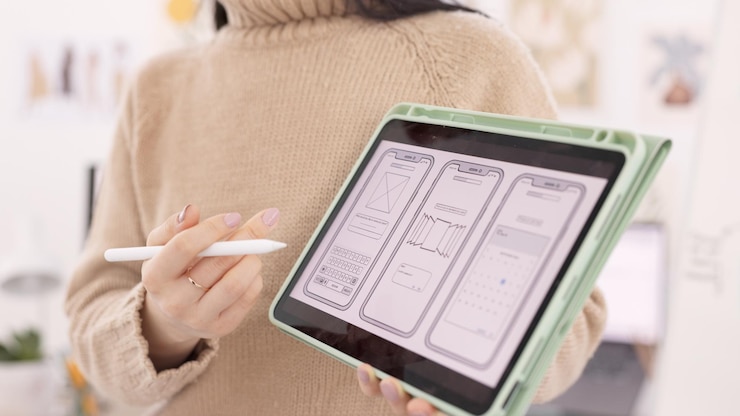
Table of Contents
ToggleUnderstanding Jibun Techo: What Makes It Special?
Jibun Techo is not just a regular planner—it is a multi-purpose life organizer developed by Kokuyo in Japan. Unlike traditional planners, Jibun Techo comes in multiple formats and is designed to be used beyond just one year. It includes sections for recording life events, tracking habits, listing personal goals, and even keeping financial records.
One of the standout features of Jibun Techo is its thin but durable Tomoe River paper, which allows for a smooth writing experience with fountain pens, gel pens, or fine liners. The structured layout with grids, timelines, and pre-made categories makes it highly organized yet flexible enough to accommodate different planning styles.
People who enjoy writing things down manually and prefer a visual, tactile experience often find Jibun Techo to be the perfect planner. However, it requires dedication to set up and maintain, which may not suit those who need a quick, automated system.
The Benefits of Using a Digital Planner

Digital planners have surged in popularity due to the convenience they offer. Unlike paper planners, digital planners are accessible across multiple devices, including smartphones, tablets, and computers. Popular options include apps like GoodNotes, Notion, OneNote, and Google Calendar, each with unique features for different types of users.
One major advantage of digital planners is their customizability. Users can add hyperlinks, insert images, sync appointments, and even integrate their tasks with productivity apps. Some planners offer AI-assisted scheduling, which helps users optimize their day with smart reminders and automation.
Additionally, digital planners are environmentally friendly and eliminate the need for carrying a physical notebook. With cloud storage, there is no risk of losing important notes, and sharing information with others is easy. However, they may lack the personal touch that physical planners provide and can sometimes be distracting due to notifications and screen fatigue.
Comparing Features: Jibun Techo vs. Digital Planners
| Feature | Jibun Techo | Digital Planner |
|---|---|---|
| Ease of Use | Requires manual writing and setup | Quick edits, syncs across devices |
| Customization | Customizable but limited to paper | Highly customizable with templates and links |
| Portability | Compact, but needs to be carried | Accessible anywhere with a device |
| Sustainability | Paper-based, requires new purchase yearly | Eco-friendly, digital storage |
| Integration | Works independently | Syncs with apps, calendars, and reminders |
| Writing Experience | Tactile, good for memory retention | Typing, voice notes, and handwriting input |
From this comparison, it’s clear that Jibun Techo is best for those who love physical note-taking, while digital planners suit users who prefer automation and cloud storage.
Productivity: Which One Helps You Stay on Track?
A planner is only useful if it helps you achieve your goals and stay organized. Jibun Techo’s habit tracker, timeline, and pre-designed sections encourage daily journaling and reflection. Many users find that physically writing down tasks boosts memory retention and productivity.
On the other hand, digital planners offer smart reminders, recurring tasks, and AI-driven scheduling, making them more efficient for people with dynamic schedules. Digital planners also integrate with task management tools like Trello or Asana, making them ideal for professionals managing multiple projects.
The right choice depends on whether you prefer mindful, structured planning (Jibun Techo) or automated, tech-driven efficiency (digital planner).
Cost Comparison: Is One More Budget-Friendly?
The cost of a Jibun Techo planner varies depending on the format and accessories. The standard Biz edition or Idea Notebook costs around $30–$50, and additional notebooks or stickers can increase the price. Since it’s a yearly planner, users must buy a new one each year.
Digital planners, on the other hand, have a wide price range. Some are free (Google Calendar, Notion), while others require a one-time payment or a subscription. Apps like GoodNotes or Notability can cost around $10–$15, while premium productivity software like Evernote or Todoist requires monthly subscriptions.
Overall, Jibun Techo has a fixed cost but requires annual renewal, whereas digital planners vary in cost depending on features and app subscriptions.
Who Should Choose Jibun Techo?
Jibun Techo is perfect for:
- People who enjoy writing manually and appreciate paper planners.
- Those who like structured formats and habit-tracking layouts.
- Individuals who prefer a distraction-free planning method.
- Bullet journal users who want a pre-structured alternative.
However, it may not be ideal for those who:
- Need quick edits and automation.
- Want to sync tasks and calendars across multiple devices.
- Prefer digital storage for easy access anytime.
Who Should Use a Digital Planner?

A digital planner is a great choice for:
- People who are comfortable using apps for organization.
- Those who need cloud syncing, automation, and reminders.
- Users who manage team projects and schedules online.
- Individuals who prefer paperless, eco-friendly solutions.
However, digital planners may not work well for:
- Those who find screens distracting or overwhelming.
- People who enjoy the physical act of writing and find it more engaging.
Conclusion
Choosing between Jibun Techo and a digital planner depends on your personal preferences and needs. If you enjoy writing by hand, structured layouts, and a distraction-free experience, Jibun Techo is an excellent choice. On the other hand, if you value automation, cloud syncing, and easy customization, a digital planner is the better option.
Both have their strengths, and some users even combine both systems—using Jibun Techo for personal reflection and a digital planner for scheduling work tasks. The best planner is the one that you’ll consistently use and enjoy!
FAQs
1. Can I use both Jibun Techo and a digital planner?
Yes! Many people use Jibun Techo for journaling and a digital planner for scheduling and reminders.
2. Which one is better for students?
Students who enjoy handwritten notes and structured planning may prefer Jibun Techo. Digital planners work well for managing assignments, deadlines, and collaborative projects.
3. Is Jibun Techo available in different languages?
Jibun Techo is primarily in Japanese, but many users find it intuitive and easy to use with online guides.
4. Do digital planners work offline?
Yes, most digital planners like GoodNotes, Notion, and OneNote allow offline access, but cloud-based features may require an internet connection.
5. What is the best digital planner for beginners?
Google Calendar and Notion are great for beginners, offering free and easy-to-use planning tools.